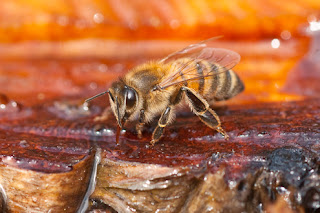Today scouting a nursery for plants, I was distracted by two hummingbirds trapped inside the greenhouse. Luckily for them, there were a lot of fuschias, a favorite forage plant of hummingbirds and one was feeding consistently while the other was doing the equivalent of laps up and down the side of the greenhouse in what appeared a frantic effort to find a way out. The woman at the checkout seemed unconcerned and tried to reassure me that they would find their way out when the door was opened.
This incident brought to mind a different trap-and-release moment that happened last week. A friend and I were having coffee one afternoon in a little café downtown, sitting away from the door and the cold air that followed anyone’s entrance. A man and a woman with a young child were sitting to the right of the door just inside the big ceiling-to-almost-floor window that viewed the sidewalk and Rte. 1 and the park across the street, a sight with a lot of activity at this time of the day. And there was activity at the window too. A big bumblebee was at work trying to push the window out of its way and not succeeding. The woman found a cup and used a postcard from a stack on the window ledge to try to capture the bee but, alas, she failed at this gracious endeavor. I gave her high marks for trying.
Our coffees finished, I decided to take a turn with the bee rescue. A quick survey of the window did not reveal its whereabouts – it had ceased its buzzing against the window before the family left. Then I spotted it, perched, wedged really, between the ceiling and a column that seemed attached to the vertical edge of the window. I don’t like to anthropomorphize but part of me couldn’t help but try to imagine its dealing with its current reality, the glass air that it couldn’t get through, the sights outside, how it came inside in the first place, and now, motionless, head facing inward toward the wall, its other body parts arranged so that the thorax was on top of the column, the big furry abdomen hanging down. Waiting out its fate? Merely resting? No, summoning me! I climbed on a chair, found I could reach up to the necessary height and using maybe even the same postcard that had been used before urged the bee out of its crevasse and onto the edge of the card. My friend held it while I climbed off the chair and then, with the postcard and clinging bee, I walked rather speedily out of the café, along the sidewalk past a few storefronts and toward a planting of tulips and daffodils at the entrance to a B and B. My plan to deposit the bee on one of the daffodils – since I had seen a bumblebee foraging on a daffodil a few days before – did not have to be put into effect. The bee revved up its wings and buzzed off under its own summoned energy.
I got more energy from that bee rescue than from the coffee.
Here is a recent photo of a bumblebee on a chokeberry or Aronia blossom:
Bombus ternarius on Aronia



















